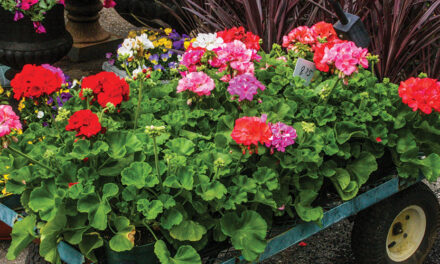Published in the August 31, 2016 edition
By DAN TOMASELLO
LYNNFIELD — The town’s two water districts are holding their own even though there is no end in sight to the drought.
In a phone interview with the Villager, Lynnfield Center Water District (LCWD) Superintendent Ken Burnham said the district has instituted an outside watering ban due to the drought. He said the ban is the result of the Massachusetts Department of Environmental Protection (DEP) ordering the 14 public water suppliers within the Ipswich River Basin, including the LCWD, to issue water restrictions to reduce the use of outside watering.
Lynnfield is one of 13 communities using the Ipswich River Watershed as the source for all or a large portion of its water supply. The river supplies more than 330,000 people in these 13 cities and towns, with 25 to 30 million gallons per day being withdrawn for water supply year round. The volume withdrawn during the summer is higher than other times of the year, which is primarily attributed to residents in these communities watering their lawns.
Residents who live in the LCWD are only allowed to use hand held hoses when watering outside and the use of sprinklers is prohibited. Burnham said residents who violate the LCWD’s water restrictions will be fined $100 for the first offense. The fine will be doubled for each subsequent offense.
“Mother Nature is in charge,” said Burnham. “The Ipswich River is dry and the Saugus River is dry. The communities that use the Ipswich River for their water supply are having difficulties and we don’t know when it’s going to end. We need more rain.”
Burnham said conserving water is necessary in order for the LCWD to maintain the desired 90 foot level in the district’s water tanks. He said problems would arise if the water level in the tanks drops to 55 feet.
“The tanks are filled to full capacity at night and if they don’t stay filled, it will result in serious problems,” said Burnham.
Burnham noted around 1.4 million gallons of water were being pumped each day prior to the water ban being put in place. He said that figure has dropped to 1 million gallons.
While Burnham said most LCWD residents have abided by the water restrictions, the district has issued over 140 fines to residents who have violated the restrictions. He said Massachusetts DEP would fine the LCWD if the district does not comply with the agency’s order to institute the water ban.
“We are talking big money,” said Burnham. “They could issue us a fine of $25,000 or more.”
Burnham said the LCWD has kept residents informed about the water restrictions via signs, notices in the newspapers and the town’s reverse 911 system. He said he understands how frustrating the drought has been to district residents.
“We understand people spend a lot of money on landscaping and want to water their lawns, but this is a serious situation,” said Burnham. “The good news is the grass will come back when it rains.”
While the LCWD gets its water from the Ipswich River, the Lynnfield Water District (LWD), which services South Lynnfield, gets its water from the Massachusetts Water Resources Authority (MWRA). The MWRA services 2.2 million people and 5,500 industrial users by using the Quabbin and Wachusett Watersheds and Reservoirs.
An easy way for residents to remember which water district provides water to their homes is to check the color of the fire hydrants in their neighborhoods. LCWD fire hydrants are green while LWD fire hydrants are red.
The MWRA announced in a press release last week that the “Quabbin and Wachusett Reservoirs are still in normal operating range” even though the state issued a drought warning for Northeast Massachusetts. However, the MWRA is requesting people to conserve water.
“While the Quabbin Reservoir remains within normal operating range for this time of year, it is always important to practice water conservation wherever possible, particularly during long dry spells such as this,” stated the MWRA in a news release.
The Quabbin Reservoir made headlines last week after a small plane piloted by a 42-year-old Newport, R.I. man made an emergency landing on a sandbar in the reservoir. The Quabbin is the largest inland body of water in the state.
Worst drought in over a decade
The drought that has taken hold in the Northeast is the worst in over a decade, which has been attributed to a second year of below-average rainfall. While the situation is not as dire as the five-years-running West Coast drought, hot weather has stressed farms and has threatened to cause more wildfires than usual.
The U.S Drought Monitor recently classified a small section of the Northeast region of Massachusetts under extreme drought conditions. Extreme drought is the fourth highest of the drought monitor’s five classifications and means major crop losses are possible along with widespread water shortages or restrictions. The only higher level is exceptional drought.
The dry conditions have raised the risk of wildfires in Massachusetts, said Dave Celino, chief forest fire warden for the state Department of Conservation and Recreation (DCR). Typically, the state records about 1,600 wildland fires a year. But this year, it has already seen more than 1,000.
— The Associated Press contributed to this report.




